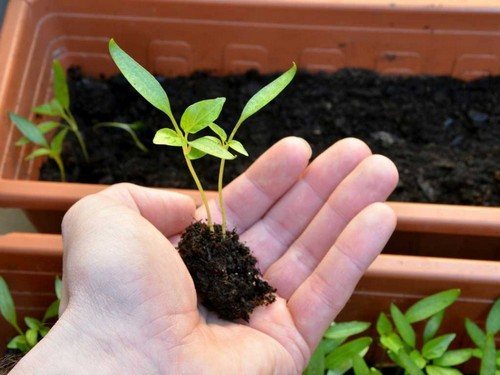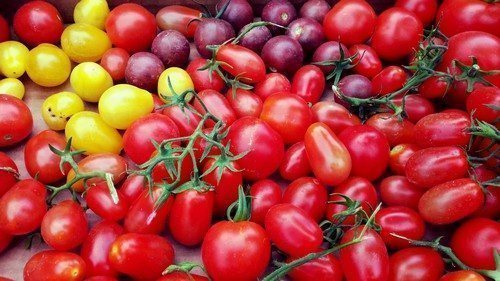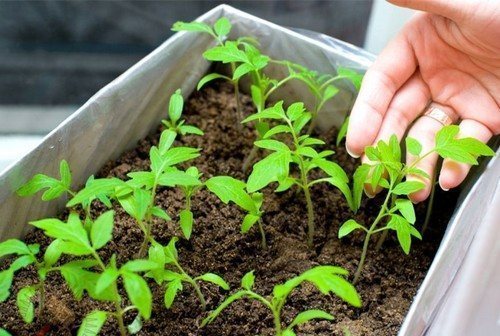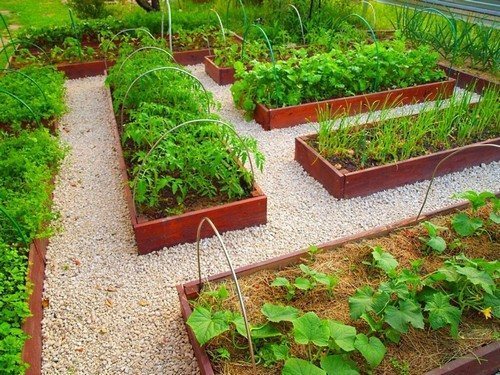Celery is a popular vegetable crop and many gardeners enjoy growing it. The roots and leaves are used in cooking. The culture is characterized by a high content of vitamins and beneficial elements. In addition, roots and stems are tasty, low in calories and suitable for dietary and medicinal nutrition.

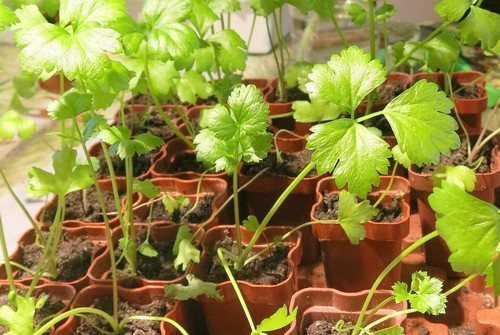
Timing for sowing celery seedlings
Each type of celery is grown using seedlings.
Vegetable ripening time after germination:
- root type – 140–190 days;
- petiole celery – 80–180 days;
- leaf culture – 50 days.
Experienced gardeners do not advise sowing seeds ahead of schedule. The best time for sowing is a good sunny day. When sowing seeds for seedlings, the characteristics of the region and weather conditions are taken into account.
Celery root produces large tubers that are used in cooking.
The species is sown according to the following schedule:
- northern regions of the country - after February 15;
- middle zone - full February;
- southern regions - from February 15 to March 10.

Petiole celery is sown in the following numbers:
- southern regions - sowing is carried out from the last days of March to the first ten days of April;
- middle zone – the whole month of March;
- northern regions – until March 10.
The leaf type does not have tubers or petioles. Sowing dates for leaf celery:
- northern regions - second ten days of March;
- southern regions - early April.
Some gardeners use the Lunar calendar, taking into account the weather conditions of the region.
| Favorable and unfavorable days for sowing celery in 2020 | ||||
| January | February | March | April | |
| Favorable days for sowing | ||||
| Root view | 23, 25–27 | 10–15, 17–20, 24–25 | 3–6, 17–18, 22, 27–30 | 5–7, 10–14, 18–19, 23, 25–29 |
| Leaf and leaf types | 10–25, | 1, 8, 24–29 | 1–8, 25–31 | 1–7, 24–30 |
| Unfavorable days for sowing | ||||
| Any kind | 9, 23 | 9, 24 | 7, 22 | |
Not only the types of celery are taken into account, but also the phase of the Moon and the zodiac sign of its presence.
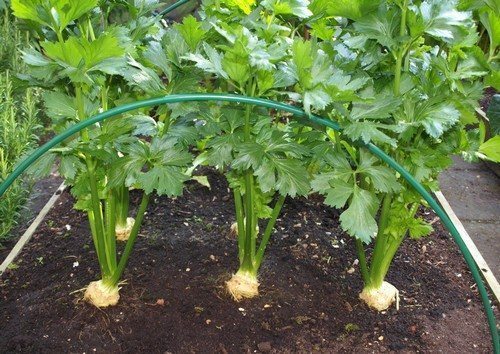
Correspondence between lunar phases and crops:
- New moon. This is not the time to sow seeds. The plant will be weak and painful.
- Waxing Crescent. Favorable time for sowing. The phase of the Moon has a beneficial effect on the movement of juices in the above-ground part of the plant.
- Full moon. There is no need to sow.
- Waning moon. Favorable time for sowing root celery.
The calendar does not prohibit landing on other days. You should only refuse to sow on the New Moon and Full Moon.
Growing celery seedlings at home
Only if you follow the rules for choosing seeds, soil and sowing method will it be possible to grow viable seedlings, which in the future will give a good crop harvest.
Soil preparation
To grow celery seedlings, avoid acidic soil. Neutral, loose soil that retains moisture well and allows air to pass through is suitable. When preparing the soil mixture yourself, combine the following components:
- peat – 10 l;
- coconut substrate, soaked – 2 l;
- compost or vermicompost – 1 l;
- perlite – ½ liter.
Store-bought soil is watered with a weak solution of manganese or Fitosporin-M.
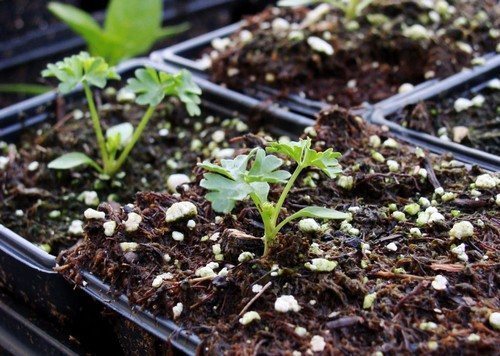
Another soil option for seedlings:
- Garden soil, river sand, sawdust, peat, crushed eggshells are mixed in equal volumes.
- The soil mixture is calcined in the oven.
- For 10 kg of soil add 20 g of urea and 200 g of wood ash.
Instead of an oven, the soil is treated with a concentrated solution of manganese.
Selection of containers for sowing
If subsequent picking of seedlings is expected, any containers will do: boxes, boxes, pots, seedling cassettes. Otherwise, choose cups, small pots, individual cassettes. But in any case, the selected containers are about 7 cm high with drainage holes.
It is recommended to sow the seeds of the root type of crop immediately into individual containers, since the sprouts of this type of celery do not tolerate picking. It is advisable not to disturb the root system of the vegetable so as not to damage the main root. Otherwise, the fruit will lose its beneficial properties.
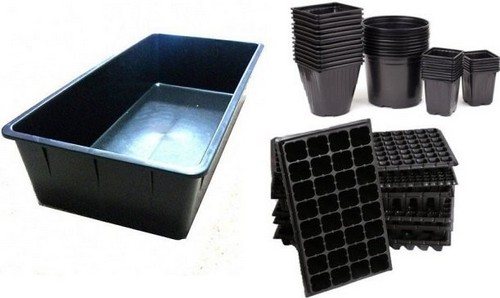
Preparing seeds for sowing
What to look for when purchasing planting material:
- For sowing, only fresh seeds are used, which will expire next season.
- It is preferable to choose seeds of Dutch selection that have high yields.
- The choice is made on large-fruited root celery. In this case, the result will be at least 500 g.
- You should purchase early-ripening varieties of vegetables. Otherwise, the root crops will not ripen on time.
Before sowing, a number of measures are carried out to shorten the germination period.
List of preparatory procedures:
- Soaking seed material. The seeds are placed in a canvas bag, which is dipped in hot water and kept until it cools completely.
- Washing the seeds and then soaking them in melt water for 3 days.
- Stratification. The seed material is kept on a damp cloth for five days, then in the refrigerator for 14 days.
- Daily bubbling, then soaking in a growth stimulator. (Epin, HB 101).
Only dry seed material is immersed in the ground.
Sowing seedlings
Seeds are sown in highly moist soil. Use settled water at room temperature. Furrows are made in the ground, 1 cm deep. Seed material is poured into them. The distance between the rows is 5 cm. Then the seeds are pressed down a little, but not buried or sprinkled with soil. As the soil dries, watering is carried out. After 2 weeks, spray with Trichodermin at the rate of 10 mg per 1 sq. m. meter.
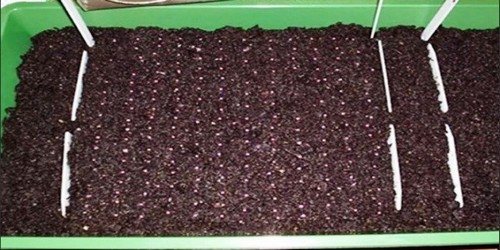
Seedling care
Before the seeds are pecked, the boxes are kept in a dark room at a temperature of 25–27 °C, covered with glass or film on top. The plantings are periodically ventilated, for which the film is removed. When sprouts appear, the film is removed and the containers are transferred to light, but to a cool place where the temperature is constant 15–18 °C. Time spent in sunlight is 8 hours. When there is a lack of lighting, use phytolamps. Shoots appear on the 14th day.
Watering and fertilizing seedlings
The first watering is carried out 4–5 days after the sprouts appear. The procedure is repeated weekly. The first waterings are carried out with a pipette or syringe so that the liquid does not get on the seedlings. Later, water at the root.
After the sprouts appear, the soil is disinfected with any biological preparations. When the first 2 leaves grow, the seedlings need to be thinned out. The distance between shoots is 3 cm.
Fertilize for the first time 10 days after germination. Use chicken manure at the rate of 1 teaspoon per 3 liters of water. Then, every 10 days, nitrophoska is administered according to the instructions on the package.

Picking, landing in the ground
The operation is carried out when 2–3 leaves appear on the seedling. From this time, the seedlings begin to harden. To do this, the pots are taken out onto the balcony or garden. After the appearance of the 6th leaf, which occurs 70 days after sowing, the seedlings are transferred to open ground.
Other options for growing celery at home
A piece of stalk is dipped into a glass of water and placed on the windowsill. Maintain thermometer readings at 18 °C. After 3–4 days, stems will appear. They are eaten. And as soon as the stump has roots, it is transferred to open ground. Such vegetables do not produce seeds, but they will have greens all summer.
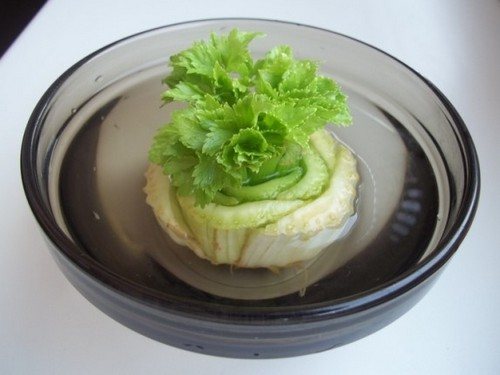
Farmers do not see any difficulties in sowing and caring for seedlings. If you follow the basic rules and sowing dates, a good harvest will grow, which will be used for a long time, enriching dishes with vitamins and excellent taste.





